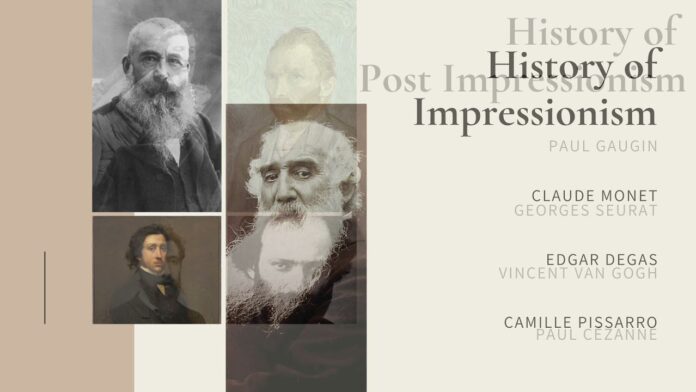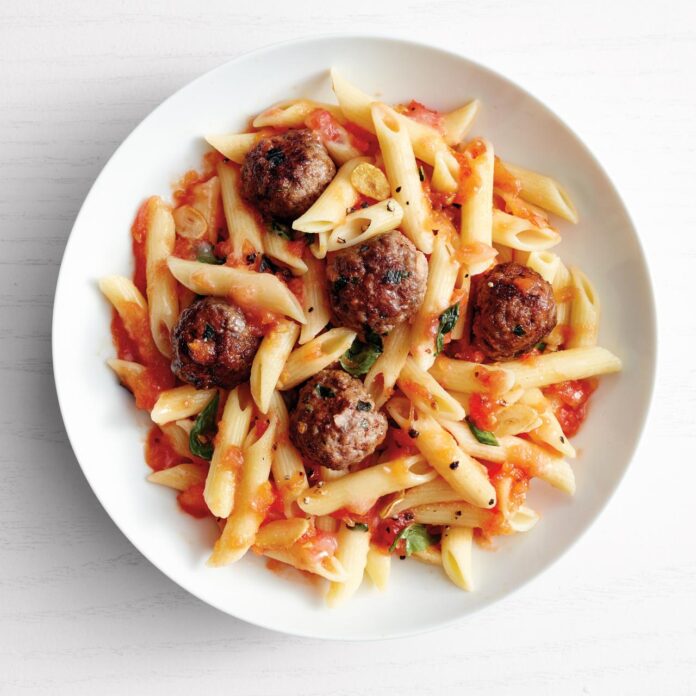Art has been an integral part of human civilization since the dawn of time. From the earliest cave paintings to the modern masterpieces adorning the walls of galleries, the evolution of artistic expression has mirrored the changing cultural, social, and technological landscapes of the world. In this comprehensive blog post, we will delve into the rich tapestry of historical art movements, exploring their defining characteristics, influential artists, and the profound impact they have had on the artistic landscape.
Overview of Art Movements
Art movements are distinct periods or styles in the history of art, each with its own unique aesthetic, philosophical, and cultural underpinnings. These movements have emerged and evolved over time, reflecting the zeitgeist of the eras in which they flourished. Understanding the context and the driving forces behind these art movements is crucial to appreciating the depth and richness of the artistic heritage.
Prehistoric Art

The Dawn of Human Expression
- Prehistoric art refers to the earliest forms of artistic expression, dating back to the Stone Age, roughly 40,000 years ago.
- These early artworks were primarily found in the form of cave paintings, petroglyphs (carved rock images), and small sculptural objects.
- The subjects of prehistoric art often depict scenes of daily life, hunting, and spiritual rituals, providing a glimpse into the beliefs and practices of our ancestors.
The Significance of Cave Paintings
- Cave paintings, such as those found in Lascaux, France, and Altamira, Spain, are some of the most well-preserved examples of prehistoric art.
- These paintings were created using pigments derived from natural sources, such as ochre, charcoal, and animal fat, and were often applied to the walls of caves using primitive tools.
- The cave paintings showcase a remarkable level of artistic skill and attention to detail, depicting animals, humans, and abstract symbols with remarkable accuracy and expressiveness.
The Emergence of Sculpture
- Alongside cave paintings, prehistoric artists also created small sculptural objects, often depicting animals or abstract forms.
- These sculptures were typically carved from stone, bone, or ivory, and were often used in religious or ceremonial rituals.
- The development of these early sculptural techniques laid the foundation for the more complex and elaborate artistic creations that would emerge in later periods.
Ancient Art

The Grandeur of Ancient Civilizations
- Ancient art refers to the artistic works produced by the great civilizations of the ancient world, including Mesopotamia, Egypt, Greece, and Rome.
- These civilizations were marked by impressive architectural achievements, intricate sculptural works, and the creation of iconic works of art that have stood the test of time.
The Art of Ancient Mesopotamia
- Mesopotamian art, produced in the region between the Tigris and Euphrates rivers, is characterized by its rich visual narratives and the use of cuneiform script.
- Notable examples of Mesopotamian art include the relief sculptures of the Assyrian kings, the elaborate wall reliefs of the Babylonian palaces, and the iconic Mesopotamian cylinder seals.
The Enduring Legacy of Ancient Egypt
- Egyptian art is renowned for its distinctive style, characterized by the use of bold colors, stylized figures, and the incorporation of hieroglyphic writing.
- Iconic examples of Egyptian art include the monumental pyramids, the colossal statues of pharaohs, and the intricate wall paintings found in tombs and temples.
The Artistic Innovations of Ancient Greece
- Ancient Greek art is celebrated for its emphasis on realism, proportion, and the idealization of the human form.
- Masterpieces of Greek art include the sculptural works of Phidias, the architectural marvels of the Parthenon, and the exquisite pottery and vase paintings.
The Grandeur of Ancient Rome
- Roman art, influenced by the artistic traditions of Greece, is characterized by its focus on realism, imperial propaganda, and the creation of practical and functional works of art.
- Notable examples of Roman art include the impressive public monuments, the lifelike portrait busts, and the stunning mosaics found in villas and public buildings.
Medieval Art
The Influence of Christianity
- Medieval art, spanning the period from the 5th to the 15th century, was heavily influenced by the rise of Christianity and the Catholic Church.
- This era saw the development of religious art, including illuminated manuscripts, stained glass windows, and intricate religious iconography.
The Romanesque Period
- The Romanesque period, which lasted from the 11th to the 12th century, was characterized by the construction of grand Romanesque cathedrals and the creation of ornate decorative elements, such as carved capitals and intricate metalwork.
- Notable examples of Romanesque art include the Abbey Church of Saint-Sernin in Toulouse, France, and the Bayeux Tapestry.
The Gothic Period
- The Gothic period, spanning the 12th to the 15th century, saw the development of the iconic Gothic cathedral, with its soaring arches, elaborate stained glass windows, and intricate sculptural decoration.
- Renowned examples of Gothic art include the Cathedral of Notre-Dame in Paris, the Reims Cathedral, and the stunning illuminated manuscripts produced during this era.
The Byzantine Empire
- The Byzantine Empire, centered in Constantinople (modern-day Istanbul), produced a rich and distinctive artistic tradition, characterized by the use of mosaics, the incorporation of religious imagery, and the development of iconic religious architecture.
- Iconic works of Byzantine art include the magnificent mosaics of the Hagia Sophia in Constantinople and the stunning wall paintings found in the churches of Cappadocia.
Renaissance Art
The Rebirth of Classicism
- The Renaissance, which spanned the 14th to the 17th century, marked a significant shift in the artistic landscape, as artists turned to the classical traditions of ancient Greece and Rome for inspiration.
- This era saw the emergence of renowned artists such as Leonardo da Vinci, Michelangelo, and Raphael, who were at the forefront of the Renaissance’s emphasis on realism, perspective, and the human form.
The Rise of Humanism
- The Renaissance was also characterized by the rise of humanism, a philosophical movement that placed the individual at the center of artistic and intellectual pursuits.
- This shift in perspective is reflected in the portraiture, religious art, and mythological works of the period, which often celebrated the beauty and complexity of the human figure.
The Patronage of the Medici Family
- The Medici family, a prominent Florentine dynasty, played a crucial role in the flourishing of Renaissance art, serving as influential patrons and supporting the work of many of the period’s most celebrated artists.
- The Medici’s patronage led to the creation of masterpieces such as Michelangelo’s David and the stunning frescoes adorning the Sistine Chapel.
The Venetian School
- Alongside the Florentine Renaissance, the Venetian school of art also emerged, characterized by its vibrant use of color, the exploration of light and atmosphere, and the creation of large-scale, monumental works.
- Prominent Venetian artists, such as Titian, Tintoretto, and Veronese, left an indelible mark on the artistic landscape of the Renaissance.
Baroque Art
The Grandeur of the Baroque
- The Baroque period, spanning the 17th and early 18th centuries, was marked by a dramatic and ornate style that emphasized the use of light, emotion, and movement.
- Baroque art was often commissioned by the Catholic Church and the European monarchies, serving as a means of asserting their power and grandeur.
The Influence of the Counter-Reformation
- The Baroque period coincided with the Counter-Reformation, a movement within the Catholic Church aimed at reasserting its influence and authority.
- This religious context is reflected in the Baroque’s emphasis on the dramatic and emotive representation of religious themes, as exemplified in the works of Caravaggio and Bernini.
The Expansion of the Arts
- The Baroque period saw a remarkable expansion of the arts, with the development of grand architectural structures, such as St. Peter’s Basilica in Rome, and the creation of large-scale paintings and sculptures.
- Prominent Baroque artists, including Rubens, Rembrandt, and Velázquez, left an indelible mark on the artistic landscape, showcasing their virtuosity and technical mastery.
The Spread of Baroque Art
- While the Baroque style originated in Italy, it quickly spread throughout Europe, taking on distinct regional flavors and influences.
- The Spanish Baroque, exemplified by the works of Diego Velázquez, and the Dutch Golden Age, known for the masterful genre paintings of Rembrandt and Johannes Vermeer, are just two examples of the diverse expressions of Baroque art.
Romanticism
The Emotional and Imaginative Expressions
- Romanticism, a cultural and artistic movement that flourished in the late 18th and early 19th centuries, was characterized by its emphasis on emotion, imagination, and a fascination with the natural world.
- Romantic artists often sought to capture the sublime and the awe-inspiring, using their art as a means of conveying their deep emotional and spiritual connections to the natural landscape.
The Influence of Literature and Music
- The Romantic movement was heavily influenced by the literary and musical arts, with many Romantic painters drawing inspiration from the works of Romantic poets and composers.
- Prominent Romantic artists, such as J.M.W. Turner, John Constable, and Caspar David Friedrich, captured the grandeur and power of nature in their evocative landscapes and seascapes.
The Emergence of the Individual
- Romanticism placed a strong emphasis on the individual, celebrating the unique experiences and perspectives of the artist and the viewer.
- This focus on the individual is reflected in the Romantic movement’s exploration of personal emotions, the idealization of the past, and the celebration of the unique and the exotic.
The Diversity of Romantic Art
- Romantic art, while united by its overarching themes and emotional expressiveness, took on diverse forms and styles across different regions and cultures.
- From the dramatic Neoclassical paintings of Jacques-Louis David to the ethereal, dreamlike works of William Blake, the Romantic movement encompassed a wide range of artistic expressions.
Realism
The Rejection of Idealization
- Realism, which emerged in the mid-19th century, was a reaction against the idealized and romanticized depictions of the Romantic era.
- Realist artists sought to accurately and objectively represent the world around them, focusing on the everyday lives of common people and the gritty realities of industrialization and urbanization.
The Influence of Photography
- The development of photography in the 19th century had a profound impact on the Realist movement, as artists sought to emulate the camera’s ability to capture the world in an unfiltered, documentary-like manner.
- Realist painters, such as Gustave Courbet and Jean-François Millet, often used photographic references to inform their works, striving for a level of visual accuracy that had not been seen in previous art movements.
The Social Consciousness of Realism
- Realist art was often imbued with a strong sense of social consciousness, with artists using their work to draw attention to the plight of the working class and the inequalities of the Industrial Revolution.
- Prominent Realist artists, such as Honoré Daumier and Käthe Kollwitz, created powerful depictions of social injustice and the struggles of the common people.
The Expansion of Realism
- While Realism initially emerged in France, the movement quickly spread to other parts of the world, taking on distinct regional flavors and addressing the unique social and cultural issues of each context.
- From the gritty urban scenes of American Realist painters to the rural, working-class depictions of the Peredvizhniki (Itinerant) movement in Russia, Realism found diverse expressions across the globe.
Impressionism
The Capture of Fleeting Moments
- Impressionism, which flourished in the late 19th century, was a revolutionary art movement that sought to capture the fleeting, ever-changing nature of visual perception.
- Impressionist painters, such as Claude Monet, Pierre-Auguste Renoir, and Camille Pissarro, used bold brushstrokes, vibrant colors, and a focus on the play of light to create their distinctive, atmospheric paintings.
The Influence of Photography and Science
- The development of photography and the scientific understanding of the nature of light and color had a significant impact on the Impressionist movement.
- Impressionist artists incorporated these new technological and scientific advancements into their art, experimenting with the ways in which the human eye perceives and interprets visual information.
The Rejection of Academic Traditions
- Impressionism was a radical departure from the traditional academic painting styles that had dominated the art world for centuries.
- By rejecting the precise, detailed rendering of subjects and focusing instead on the immediate, sensory experience of the visual world, Impressionist artists challenged the prevailing notions of what constituted “fine art.”
The Emergence of the Parisian Art Scene
- The Impressionist movement was closely tied to the vibrant and evolving art scene in Paris, with many of the movement’s leading figures regularly exhibiting their works in the city’s groundbreaking Salon des Refusés (Salon of the Rejected) and Salon exhibitions.
- The Parisian art world, with its cafés, galleries, and lively discussions, became the epicenter of the Impressionist revolution.
Post-Impressionism
The Expansion of Impressionist Ideals
- Post-Impressionism, which emerged in the late 19th and early 20th centuries, built upon the foundations of Impressionism, but sought to push the movement in new and innovative directions.
- Post-Impressionist artists, including Paul Cézanne, Georges Seurat, Vincent van Gogh, and Paul Gauguin, shared a common interest in exploring the deeper emotional and psychological dimensions of their art, as well as the formal and structural elements of painting.
The Influence of Science and Color Theory
- Like the Impressionists, Post-Impressionist artists were influenced by the scientific understanding of color and light, as well as the emerging theories of visual perception.
- Seurat’s pioneering use of pointillism, a technique that employed small, distinct dots of color to create a cohesive image, was a prime example of this scientific approach to painting.
The Diversity of Post-Impressionist Styles
- While united by a shared interest in the expressive and formal qualities of painting, Post-Impressionist artists developed a wide range of diverse styles and techniques.
- From Cézanne’s exploration of geometric form and structure to Van Gogh’s emotive, swirling brushstrokes, the Post-Impressionist movement encompassed a rich tapestry of artistic expressions.
The Influence on Modern Art
- The Post-Impressionist movement paved the way for the emergence of the various 20th-century art movements, including Fauvism, Cubism, and Expressionism, which built upon the formal and conceptual innovations of the Post-Impressionists.
- The legacy of Post-Impressionism can be seen in the work of countless modern and contemporary artists, who continue to draw inspiration from the movement’s groundbreaking approaches to art.
Modern Art
The Rejection of Tradition
- Modern art, which emerged in the late 19th and early 20th centuries, was characterized by a radical departure from the traditional artistic styles and techniques that had dominated the art world for centuries.
- Modernist artists sought to challenge the prevailing notions of what constituted art, experimenting with new materials, techniques, and modes of expression.
The Influence of Industrialization and Technology
- The rise of industrialization and the rapid advances in technology had a profound impact on the development of modern art.
- Modernist artists often incorporated these new technological elements into their work, using them as a means of exploring the changing nature of the human experience in the modern world.
The Diversity of Modern Art Movements
- Modern art encompassed a wide range of diverse movements, each with its own unique aesthetic, philosophical, and political underpinnings.
- From the abstract, geometric forms of Cubism to the bold, expressive brushstrokes of Expressionism, the modern art landscape was a rich tapestry of artistic innovation and experimentation.
The Global Reach of Modern Art
- While modern art movements often had their origins in specific regions or cultural contexts, they quickly spread and evolved, taking on diverse forms and expressions around the world.
- The globalization of modern art led to a cross-fertilization of ideas and the emergence of unique regional and national art movements, each with its own distinct character and significance.
Contemporary Art
The Continued Evolution of Art
- Contemporary art, which encompasses the artistic practices of the late 20th and early 21st centuries, is characterized by its diverse, often experimental nature, as artists continue to push the boundaries of what constitutes art.
- From the conceptual and performative works of the 1960s and 1970s to the digital and multimedia art of the present day, contemporary art reflects the rapidly changing cultural, social, and technological landscape of the modern world.
The Influence of Globalization
- The increasing globalization of art, facilitated by the internet and the widespread dissemination of information, has led to a greater cross-pollination of ideas and the emergence of a truly international art scene. Contemporary artists draw inspiration from a wide range of cultural traditions, historical movements, and technological advancements, creating a truly global dialogue within the art world.
The Role of Technology
- Technology has played a significant role in shaping contemporary art practices, with many artists incorporating digital tools, virtual reality, and interactive media into their work.
- The use of technology has opened up new possibilities for artistic expression, challenging traditional notions of what constitutes art and how it is experienced by audiences.
Social and Political Engagement
- Many contemporary artists use their work as a platform to address pressing social and political issues, such as environmental degradation, inequality, and human rights abuses.
- Through their art, these artists seek to raise awareness, provoke thought, and inspire action, contributing to larger conversations about the state of the world and the need for change.
The Blurring of Boundaries
- Contemporary art often blurs the boundaries between different artistic disciplines, combining elements of painting, sculpture, performance, and installation to create immersive and multidimensional experiences.
- This interdisciplinary approach reflects the interconnected nature of the modern world, where ideas, cultures, and technologies are constantly in flux.
Conclusion
In conclusion, the history of art is a rich tapestry of creativity, innovation, and cultural expression that spans millennia. From the cave paintings of prehistoric times to the cutting-edge installations of contemporary artists, each era has brought its own unique perspectives and aesthetic ideals to the world of art.
By exploring the major art movements throughout history, we gain a deeper understanding of the diverse ways in which artists have responded to their surroundings, engaged with their communities, and pushed the boundaries of artistic expression. Whether through the realistic portrayals of Renaissance masters, the bold experimentation of the Impressionists, or the conceptual explorations of contemporary artists, each movement has left an indelible mark on the art world.
As we look to the future, it is clear that art will continue to evolve, adapt, and transform in response to the ever-changing landscape of society, technology, and culture. By studying the past and embracing the present, we can appreciate the enduring power of art to inspire, challenge, and unite us in our shared humanity.









